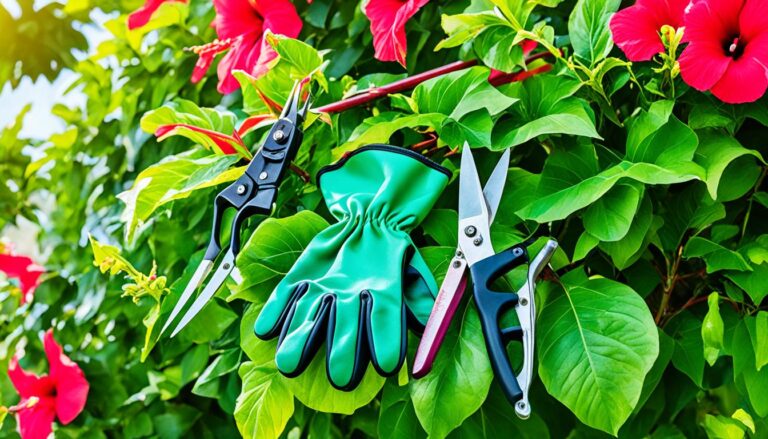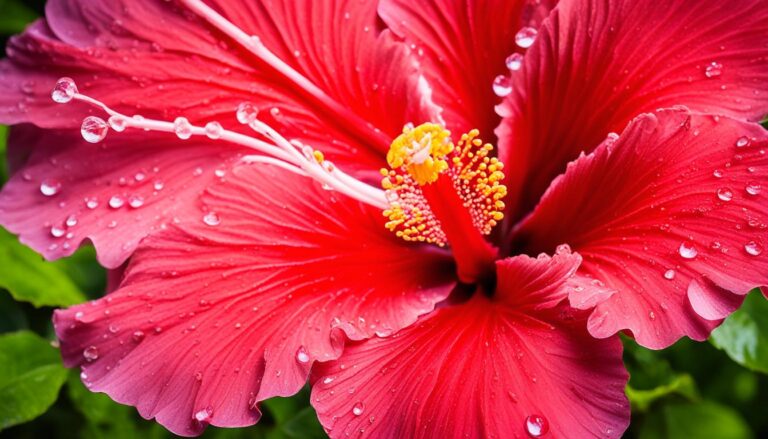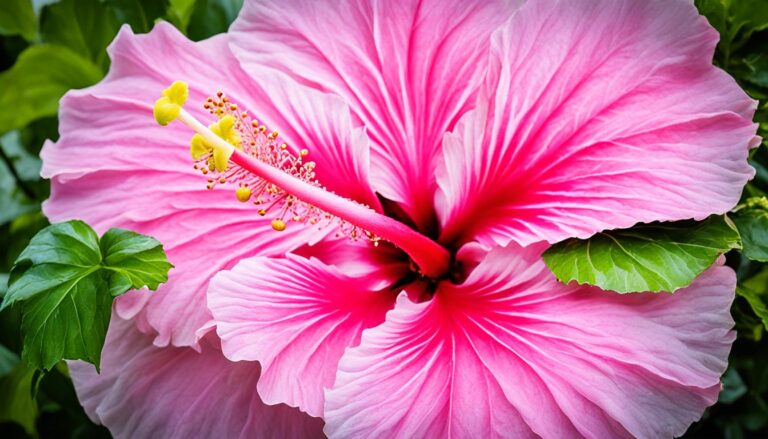Systemic Insecticide for Hibiscus: Pros, Cons, and Eco-Friendly Alternatives
As a passionate gardener, I’ve always been captivated by the vibrant beauty of hibiscus flowers. But what happens when these stunning blooms fall victim to pesky insects? That’s where systemic insecticides come into play.
Have you ever wondered how to protect your hibiscus plants from harmful pests without constantly reapplying treatments? Systemic insecticides offer a long-lasting solution by being absorbed into the plant’s system, providing protection from the inside out. But are they safe for your beloved hibiscus? And how do you choose the right one? I’ll explore these questions and more, sharing my experiences and expert insights to help you keep your hibiscus thriving and pest-free.
Understanding Systemic Insecticides for Hibiscus
Systemic insecticides are a game-changer for hibiscus care. These powerful pest control solutions work from the inside out, providing long-lasting protection for your beloved plants.
Here’s how systemic insecticides function:
- Absorption: The plant takes up the insecticide through its roots or leaves.
- Distribution: The chemical travels throughout the plant’s vascular system.
- Protection: Pests feeding on any part of the plant ingest the insecticide.
- Elimination: The insecticide kills or repels the pests, safeguarding the hibiscus.
Systemic insecticides offer several advantages for hibiscus care:
- Long-lasting protection (up to 12 months)
- Weather-resistant (won’t wash off in rain)
- Target-specific (only affects pests that feed on the plant)
- Reduced need for repeated applications
Popular systemic insecticides for hibiscus include:
| Active Ingredient | Brand Names | Target Pests |
|---|---|---|
| Imidacloprid | Bayer Advanced, Bonide | Aphids, whiteflies, mealybugs |
| Acephate | Orthene, Bonide Systemic | Scale insects, thrips |
| Dinotefuran | Safari, Greenlight | Spider mites, leafhoppers |
When choosing a systemic insecticide for your hibiscus, consider:
- Pest identification: Determine which pests are affecting your plant.
- Application method: Choose between soil drench or foliar spray.
- Safety precautions: Follow label instructions for proper use and handling.
- Environmental impact: Opt for products with minimal effects on beneficial insects.
I’ve found that using systemic insecticides has significantly reduced pest problems in my hibiscus garden. However, it’s crucial to use them responsibly and in conjunction with other pest management practices for the best results.
Types of Systemic Insecticides Suitable for Hibiscus
Systemic insecticides offer effective pest control for hibiscus plants. These products come in various formulations, each with specific benefits for hibiscus care. Let’s explore two popular categories of systemic insecticides.
Neonicotinoids
Neonicotinoids are a class of systemic insecticides widely used for hibiscus protection. Here’s what you need to know:
- Mode of action: They target the nervous system of insects
- Application methods: Soil drench, foliar spray, or granular form
- Effectiveness: Control a broad spectrum of pests, including aphids and whiteflies
- Duration: Provide long-lasting protection, often up to several months
- Uptake: Quickly absorbed by the plant’s roots and distributed throughout
While effective, it’s crucial to use neonicotinoids judiciously due to potential environmental concerns. Always follow label instructions and consider alternative methods when possible.
Imidacloprid-Based Products
Imidacloprid, a type of neonicotinoid, is a common active ingredient in many systemic insecticides for hibiscus:
- Brand names: Bayer Advanced, Merit, and Marathon
- Application: Often applied as a soil drench or granular product
- Target pests: Highly effective against sap-sucking insects like aphids and mealybugs
- Persistence: Provides protection for up to 12 months in some formulations
- Safety: Low toxicity to mammals but can affect beneficial insects if not used properly
When using imidacloprid-based products, apply them during non-blooming periods to minimize impact on pollinators. Always rotate with other insecticide classes to prevent pest resistance.
Application Methods for Systemic Insecticides
Systemic insecticides for hibiscus can be applied using two primary methods: soil drench and foliar spray. Each technique has its advantages and specific application procedures.
Soil Drench Technique
The soil drench technique involves applying the systemic insecticide directly to the soil around the hibiscus plant. Here’s how to do it effectively:
- Mix the insecticide: Dilute the product according to the manufacturer’s instructions.
- Water the plant: Moisten the soil around the hibiscus before application.
- Apply the solution: Pour the mixed insecticide evenly around the base of the plant.
- Water again: Lightly water the treated area to help the insecticide penetrate the soil.
Soil drenching offers longer-lasting protection as the plant absorbs the insecticide through its roots. This method works well for larger hibiscus plants and provides consistent protection against pests.
Foliar Spray Application
Foliar spray application involves spraying the insecticide directly onto the hibiscus leaves. Follow these steps for optimal results:
- Prepare the solution: Mix the insecticide with water as directed on the label.
- Check the weather: Choose a calm day with no rain in the forecast.
- Cover all surfaces: Spray both the upper and lower leaf surfaces thoroughly.
- Avoid runoff: Apply until leaves are wet but not dripping.
- Reapply as needed: Follow the product’s instructions for frequency of application.
Foliar sprays offer quick initial control of visible pests. They’re ideal for smaller hibiscus plants or when targeting specific problem areas. However, they may require more frequent applications compared to soil drenching.
Benefits of Using Systemic Insecticides on Hibiscus
Systemic insecticides offer several advantages for protecting hibiscus plants from pests:
- Long-lasting protection: These chemicals remain active in the plant for weeks or months, reducing the need for frequent reapplications.
- Whole-plant coverage: Systemic insecticides distribute throughout the plant, protecting all parts from pests.
- Weather-resistant: Unlike surface sprays, systemic treatments aren’t washed away by rain or irrigation.
- Targeted pest control: They specifically target sap-feeding insects, minimizing harm to beneficial pollinators.
- Reduced environmental impact: Less chemical runoff occurs compared to traditional sprays.
- Convenience: One application protects the plant for an extended period, saving time and effort.
- Effective against hidden pests: Systemic insecticides reach pests hiding in plant crevices or undersides of leaves.
- Cost-effective: The long-lasting nature of systemic treatments can be more economical over time.
- Stress reduction: By controlling pests effectively, systemic insecticides help reduce plant stress and promote healthier growth.
- Aesthetic preservation: They maintain the beauty of hibiscus blooms by preventing pest damage.
While systemic insecticides offer these benefits, it’s crucial to use them responsibly and as part of an integrated pest management approach. I’ve found that combining systemic treatments with other methods, like proper plant care and natural predators, yields the best results for hibiscus health and longevity.
Potential Risks and Precautions
While systemic insecticides offer effective protection for hibiscus plants, they come with potential risks that require careful consideration. Understanding these concerns and following proper guidelines ensures responsible use and minimizes negative impacts.
Environmental Concerns
Systemic insecticides can pose risks to beneficial insects and pollinators. Neonicotinoids, a common class of systemic insecticides, have been linked to bee population declines. These chemicals can persist in soil and water, potentially affecting non-target organisms. To mitigate environmental impact:
- Apply insecticides during evening hours when pollinators are less active
- Avoid treating hibiscus plants during bloom periods
- Use targeted application methods to reduce drift
- Consider alternative pest control methods in ecologically sensitive areas
Safe Usage Guidelines
Proper application of systemic insecticides is crucial for both effectiveness and safety. Follow these guidelines:
- Read labels carefully: Always follow manufacturer instructions for dosage and application frequency
- Wear protective gear: Use gloves, long-sleeved shirts, and eye protection when handling chemicals
- Avoid overuse: Apply only when necessary and at recommended intervals
- Store properly: Keep insecticides in original containers, out of reach of children and pets
- Dispose responsibly: Follow local regulations for chemical disposal
- Monitor weather: Avoid application before rain to prevent runoff
- Practice integrated pest management: Combine systemic insecticides with other control methods for optimal results
By adhering to these precautions, you’ll protect your hibiscus while minimizing risks to the environment and beneficial insects. Remember, responsible use is key to maintaining a healthy garden ecosystem.
Alternatives to Systemic Insecticides for Hibiscus Care
When it comes to protecting your hibiscus plants, systemic insecticides aren’t the only option. Here are some effective alternatives that’ll keep your hibiscus thriving without the potential risks:
- Neem Oil
- Natural, plant-based insecticide
- Disrupts insect feeding and breeding
- Apply as a foliar spray every 7-14 days
- Insecticidal Soaps
- Target soft-bodied pests like aphids and mealybugs
- Safe for beneficial insects when dry
- Reapply weekly or after rain
- Horticultural Oils
- Smother and suffocate pests
- Use in cooler weather to avoid leaf burn
- Effective against scale insects and spider mites
- Beneficial Insects
- Ladybugs: Devour aphids and other small pests
- Lacewings: Prey on various soft-bodied insects
- Parasitic wasps: Control caterpillars and whiteflies
- Physical Barriers
- Row covers: Prevent pest access
- Sticky traps: Capture flying insects
- Pruning: Remove infested parts of the plant
- Companion Planting
- Marigolds: Repel nematodes and attract beneficial insects
- Nasturtiums: Act as trap crops for aphids
- Herbs like basil and mint: Deter various pests
- Cultural Practices
- Proper watering: Avoid overwatering to prevent fungal issues
- Regular cleaning: Remove debris and fallen leaves
- Crop rotation: Disrupt pest life cycles
| Method | Pros | Cons |
|---|---|---|
| Neem Oil | Natural, multi-purpose | Requires frequent application |
| Insecticidal Soaps | Safe for beneficials when dry | Limited residual effect |
| Horticultural Oils | Effective against many pests | Potential leaf burn in hot weather |
| Beneficial Insects | Long-term pest control | Initial cost, may take time to establish |
| Physical Barriers | Immediate protection | Can be labor-intensive |
| Companion Planting | Enhances garden biodiversity | Requires additional planning |
| Cultural Practices | Improves overall plant health | Ongoing maintenance needed |
These alternatives offer eco-friendly solutions for hibiscus care. I’ve found that combining multiple methods often yields the best results. For instance, using neem oil alongside beneficial insects creates a robust defense against pests. Remember, healthy plants are naturally more resistant to infestations, so focus on providing optimal growing conditions for your hibiscus.
Conclusion
Systemic insecticides can be effective for protecting hibiscus plants but they’re not the only option. I’ve explored various alternatives that are eco-friendly and just as efficient. By combining different methods like neem oil horticultural oils and cultural practices you can maintain healthy hibiscus without relying solely on chemicals.
Remember responsible use is key if you choose systemic insecticides. Always follow guidelines and consider the environmental impact. Ultimately the best approach is an integrated pest management strategy tailored to your specific needs and garden conditions. With these insights you’re now equipped to make informed decisions about hibiscus care.







